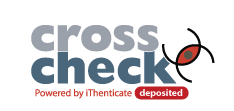IMMUNOHISTOCHEMICAL EXPRESSION OF Ki67 AND p53 IN WILMS TUMOUR AND ITS CORRELATION WITH TUMOUR HISTOLOGY AND PATHOLOGICAL STAGING
DOI:
https://doi.org/10.48047/Keywords:
.Abstract
Nephroblastoma or Wilms' tumor is a pediatric renal tumour derived from primitive renal epithelial
and mesenchymal components. It is the most common abdominal malignant tumour of young children and
is known to be associated with chromosomal abnormalities like Beckwith Widemann syndrome and
WAGR syndrome,[1]
. Overall, Wilms' tumor incidence is 7.8 cases per million children. Peak age of
incidence is 2 to 3 years of age, or 99% occurring less than six years of age.
Chemotherapy protocol for Wilms tumour is based on tumour staging and histology. Most patients
respond to chemotherapy protocol. However a small fraction relapses or metastasizes. Therefore there is
need to identify ideal cost effective prognostic markers for this pediatric tumour. The aim of our study is to
evaluate the efficiency of two cost effective Immunohistochemical markers, tumour proliferation
marker(Ki67)and tumour suppressor marker(p53) in Wilms tumour. Their expression will be correlated
with tumour histology and staging.
Cell kinetic data is an important indicator of the aggressiveness of tumour & clinical response. The
old & widely used method for assessing cell proliferation is mitotic count in routinely processed H&E
sections. Nowadays, in this IHC era we use Ki67 labelling index to assess the tumour proliferation index.
Other nuclear antigens include Ki S1 & PCNA,[2]
.











